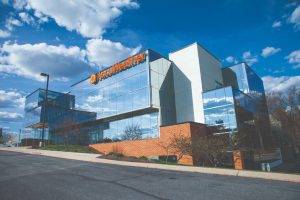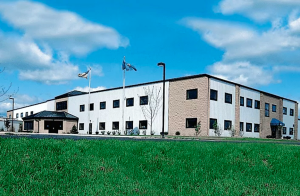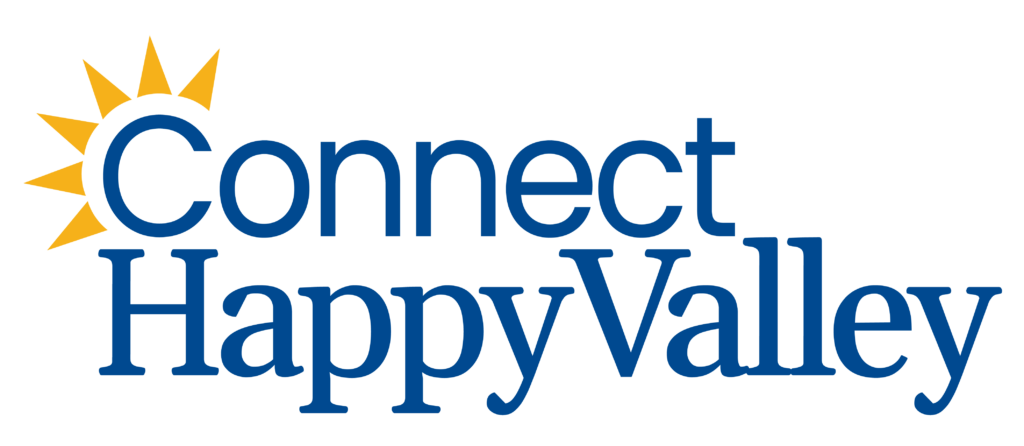By David Rockower
When the pandemic hit, there was no time to weigh the pros and cons, listen to employee opinions or create a balanced schedule; Covid-19 necessitated physical distancing and, as a result, many businesses made the switch to remote work.
Soon, many employers started asking questions: Do we really need all that office space? With no time spent commuting to work or traveling, how much more efficient might we become? How would working from home improve our employees’ quality of life?
On the flip side, employers were concerned about missing that in-person community that develops organically in the hallways and lunchrooms. How else would remote work impact the company’s day-to-day operations?
Now, with a solid two years’ experience, many companies have a clearer picture of the advantages and disadvantages of remote and hybrid work. Here’s what Happy Valley business leaders had to say on the matter.
Local companies listened to their employees
President of AccuWeather, Steven Smith, has been with the company for 25 years. The AccuWeather headquarters in State College employs 250 to 300 workers, but there are offices in New York, Wichita and Montreal as well, along with a growing number of remote workers.
When asked how AccuWeather has changed in its approach to in-person versus remote work, Smith said, “[The pandemic] normalized remote work. It’s now a normal part of our job descriptions and a normal part of our recruiting.”
“We certainly recognized that the employee’s view of where and how they do their work changed, and we needed to evolve while still preserving the core elements of our culture.”
AccuWeather, he said, started to look at things from a job classification standpoint. Teams examined each role in the company, asking, does this need to be an on-site job? Could this be a remote job, or might it be a hybrid position?
Some positions are clear-cut. For example, Smith said, “We have a security team at our State College facility. We are doing 24-hour broadcasting, and there are rules that the FCC puts on us, so we have to have a security team. That’s not a remote job; that’s not even a hybrid job. That’s a job that has to be on [premises] in the building.”
While some positions operate well as either in-person or fully remote, though, the hybrid model is a bit trickier. Smith explained, “The word became a battleground conversation because there were a lot of opinions of what hybrid was and would become. Ultimately, we have settled on hybrid as three days in an office.”
“[The pandemic] normalized remote work. It’s now a normal part of our job descriptions and a normal part of our recruiting.”
Smith allows the details of hybrid work as a function of the managers. Most employees have settled on spending Tuesday, Wednesday and Thursday in-office, while working from home on Mondays and Fridays.
“One of the things we talked about was, if you’re going to be hybrid, make it purposeful. Don’t just come to the office and do zoom meetings,” Smith said, noting he encourages his managers to hold group meetings on those in-person days, so that the team can spend time in-person, together.

AccuWeather’s remote team makes up nearly 35% of its total workforce. Credit: AccuWeather
Restek, a leading developer and manufacturer of chromatography consumables, already had a pre-pandemic U.S. remote workforce that made up 6.7% of its company. Today, that number is 36.5%, including all fully-remote and hybrid employees. Chris Marshall, vice president of human resources at Restek, explained, “We certainly recognized that the employee’s view of where and how they do their work changed, and we needed to evolve while still preserving the core elements of our culture.”
“The word became a battleground conversation because there were a lot of opinions of what hybrid was and would become. Ultimately, we have settled on hybrid as three days in an office.”
Marshall heard from employees that remote work allowed them a better work-life balance: “It was easier for them to get their kids on the bus in the morning, attend evening activities and get dinner on the table. Certainly, there are studies showing improved mental health for workers who don’t have to go into the office every day.”
Additionally, Marshall noted that employees save time and money not having to commute to and from work.
Increasing the talent pool and diversifying the workforce
Both Restek and AccuWeather recognize the benefit of remote work in their recruiting efforts.
Smith explained, “The number one thing [remote work] changed for us was recruiting. It’s really allowed us to say, ‘Hey, you don’t have to move to State College or New York. You can live in Oregon and join our team.’ It opened recruiting up, which then in turn increased our diversity—tremendously.”
“Meetings became transactional. You schedule a Zoom meeting, but there was nothing serendipitous about what you were doing. We had topic A, we solve topic A and everybody hits the goodbye button, and that became the end of it.”
Attracting diverse workers to State College has always been a challenge, and both Smith and Marshall emphasized how remote work has provided a new pathway to diverse talent. That’s something they don’t want to lose.
On the flip side, one of the big disadvantages to remote work has been that meetings became scripted.
“Meetings became transactional. You schedule a Zoom meeting, but there was nothing serendipitous about what you were doing. We had topic A, we solve topic A and everybody hits the goodbye button, and that became the end of it,” said Smith.
There was no after-meeting sharing of ideas, no checking in on one another. In essence, opportunities for building community and creativity idea-generation were lost. Smith said, “We are still working to answer the question: How do you create those opportunities to just allow people lean-back time and be the collective mind to drive the organization?”
Similarly, Marshall explained that, with an increase of remote employees, it can be difficult to maintain a healthy work culture. “How do you get new hires integrated into the culture? How do you introduce them to the company? How do you introduce them to their new team?” she posed. These are questions companies are continuing to work through.

Restek had a pre-pandemic U.S. remote workforce of 6.7%. Today that number is 36.5%. Credit: Restek.
For employees, the advantages outweigh the disadvantages
Lori Dundon has worked in the marketing department at Restek for the past 15 years. She appreciates the flexibility that remote and hybrid work allows. “Working remotely allows me to have Microsoft Teams meetings with my colleagues in Europe and Asia outside of work hours without any undue hassle. It allows me to eat healthier, because I was never very good at packing a lunch,” said Dundon.
However, Dundon admits that there are still disadvantages. While one would think that being away from Restek’s office would make it easier to separate work and home life, Dundon explained, “The biggest disadvantage I can think of is that my work is always in the other room. It’s harder to say, ‘I’m done for the day’ and walk away. I tend to take my laptop to the living room and do a little more work after dinner.”
“Working remotely allows me to have Microsoft Teams meetings with my colleagues in Europe and Asia outside of work hours without any undue hassle. It allows me to eat healthier, because I was never very good at packing a lunch.”
Overall, though, Dundon feels fortunate to work for a company that allows its workers so much flexibility, “I am very lucky. Our department has members in six countries and I believe most of us are hybrid or full-time remote.”
The new normal?
It’s clear that the pandemic shifted our view of the traditional workday and, according to Marshall, we may never go back. She said, “COVID dropped us in the deep end. It provided us this unprecedented opportunity to think differently about how and where we do our work. I don’t think we are going to view work as 9 to 5, you’ve got to be in the office every day all the time anymore. I just don’t see it.”






